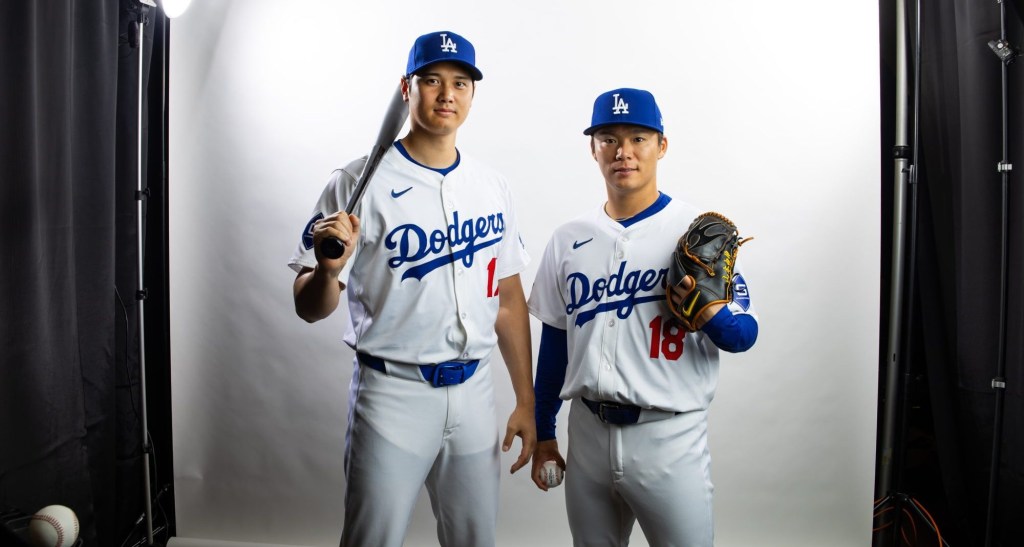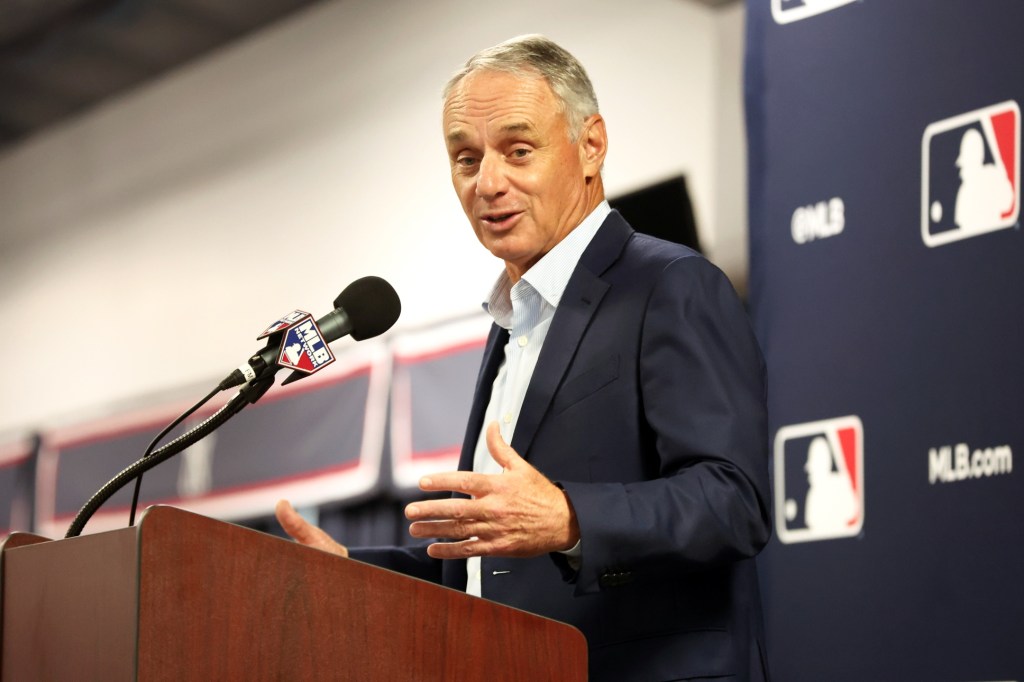It’s rarely a good thing when MLB becomes a subject for late-night comedy shows, and the league indeed is back in that mode with its new on-field uniforms, developed with Nike and Fanatics. Jimmy Fallon and John Oliver each recently mocked the revised looks, particularly the see-through uniform pants, amplifying what has been an embarrassing two weeks for the league.
The situation, however, also confirms what has been true for decades: Few things are held more sacred and generate more passion in sports than uniforms. Here is everything you need to know about the ongoing situation around MLB’s sartorial saga.
What exactly is MLB attempting to accomplish?
Thematically aligned with other on-field rules such as the ban on extreme defensive shifts, the league’s move to lighter, more flexible uniforms is aimed in part at showcasing players’ athleticism. The new uniforms also feature greater levels of moisture wicking compared to prior ones.
When did all of this start?
MLB has been actively developing these new uniforms since 2018. The following year, the league struck a major, 10-year pact for on-field uniforms with Nike and Fanatics, and ramped up efforts on this project soon thereafter. MLB conducted the first significant on-field test of these new uniforms—called Nike Vapor Premier—during last year’s All-Star Game in Seattle.
Why are player names and numbers smaller on the jerseys?
That lighter, more breathable fabric is not as well suited for traditional-sized lettering in a normal, embroidered way. It instead uses not only smaller letters and numbers but also some printed components that were previously sewn on the jerseys. The resulting look has been widely criticized as cheap looking and something much more akin to a replica or bootleg instead of something worn by a pro athlete.
But the Royals’ uniform names and numbers don’t look any different. Why is that?
The team actively lobbied for—and won—an exception to the new uniform standards, and Kansas City is still using its traditional sizing for letters and numbers. MLB has not detailed if, or how, any other team could gain similar privileges.
What is the situation with the pants?
Many players, particularly during MLB media day photo shoots that are part of spring training each year, appeared with tucked-in jersey shirt tails and undergarments easily visible. That see-through nature of the white pants has easily been the most-discussed part of this whole situation and the foundation of that mocking on late-night TV.
As the uniform issue quickly escalated into a major spring training saga, part of MLB’s response was a two-part set of talking points. First, MLB insists the fabric and thickness of the pants actually haven’t changed from prior years. Rather, it’s the new and less individualized tailoring going into effect this year that has helped create some of the sheerness effect. Second, the league began circulating a graphic that compiled a decade’s worth of media day photo shoots, which showed how, before the redesign, jersey shirt tails were visible underneath white pants.

There are multiple issues with these points. As MLB and Nike frequently heralded the uniform redesign, there was no prior public mention that the pants fabric would not change, and saying as much—either at any point last year or at the start of spring training—no doubt would have helped mitigate the subsequent blowback. A Feb. 22 statement from Nike, similar to those previously made by the company, leaned into the performance aspects of the new uniforms and made no reference to the composition of the pants not changing.
The graphic of prior media day photos reveals more issues. The underlying argument from the league here is that the intense light of the photo sessions is a particular anomaly specific to that setting, and thus not relevant to actual game situations. But the see-through element of the pants has been visible in other settings with more natural light. (Not to mention that graphic reinforced just how long MLB has actually been presenting the much-derided visible shirt-tail look.) The sheer effect, however, has definitely been more pronounced in many of this year’s media day photos.
“You always have to first test the lighting and how these things look under various types of lights,” Jena Brook, a veteran producer of large-scale fashion shows, tells Front Office Sports. “It seems like MLB definitely skipped some steps in this area.”
While still embarrassing, the pants issue has not surfaced extensively in game situations in the early going of spring training. Some of that perhaps owes to supply and near-term production issues, as not every MLB team has received its full allotment of the new pants, and in some cases teams have worn last year’s pants for exhibition games.
What does commissioner Rob Manfred have to say about all of this?
Manfred has repeatedly called for patience, saying, “I think after people wear them a little bit, they are going to be very popular.” It’s worth noting that baseball is indeed a sport based heavily on ritual and routine, and nearly every other large-scale change MLB has made—even widely embraced ones such as the pitch clock—still generated widespread controversy, particularly at introduction. But the commissioner’s call for patience still runs against long-held expectations by both players and fans of how a pro uniform should look and feel.
What is Fanatics’ role in this matter?
The sports merchandising giant is essentially a subcontractor in this situation. Nike designed these uniforms, and Fanatics is producing them to the specifications of Nike and MLB. But the matter directly intersects with rising complaints that Fanatics is already facing regarding the quality of its fan-facing products. Like Manfred, Fanatics CEO Michael Rubin insists that more time and perspective will ultimately reflect well on the new uniforms. But he acknowledged that not enough was done to get player support on the project.

“We’re doing everything as we’ve been told, and we’re getting the s*** kicked out of us,” Rubin said Friday at the MIT Sloan Sports Analytics Conference. “So that’s not fun. [The] biggest thing I probably learned is if we’re involved in something, we need to make sure that everybody better be on board. … They got certain players on board, not all players on board.”
How do players feel about all of this?
To Rubin’s point, the overall response by players has been mixed to negative. While there certainly have been some particularly outspoken players such as Phillies shortstop Trea Turner, who told the Associated Press, “Everyone hates them,” there have also been some stars such as Angels center fielder Mike Trout going on record in favor of the redesign. There is also a third group of players more indifferent to the whole situation and fixated on preparing for the regular season.
What has been the response from the MLB Players Association?
Union executive director Tony Clark has repeatedly raised questions publicly about the redesign and how it’s unfolded, saying last month that “each day has yielded something new that doesn’t seem to make as much sense as you would like it.” Most recently, though, Clark has been somewhat more tempered in his comments as he continues his tour of teams’ spring training camps, saying that he was looking forward to this no longer being an issue and that there is an increased focus on making corrections.
Does that mean something could still change with the uniforms between now and Opening Day?
In a more limited sense, yes. But a wholesale shift such as MLB scrapping the entire Nike Vapor Premier design and reverting to the previous uniforms is not likely.






